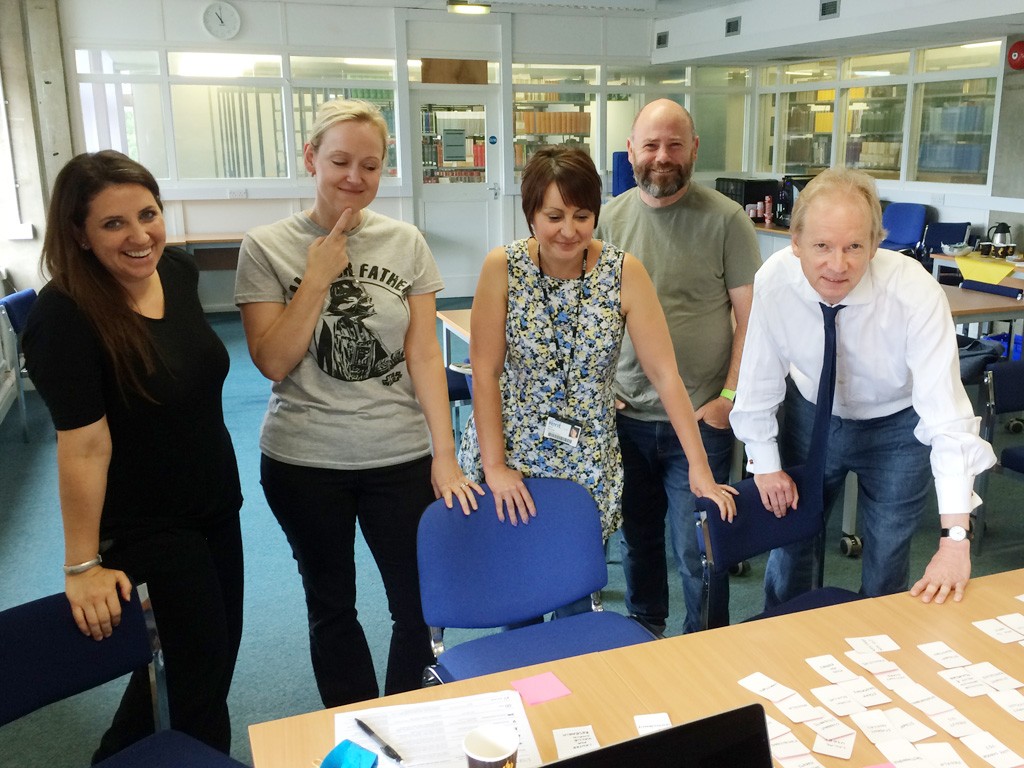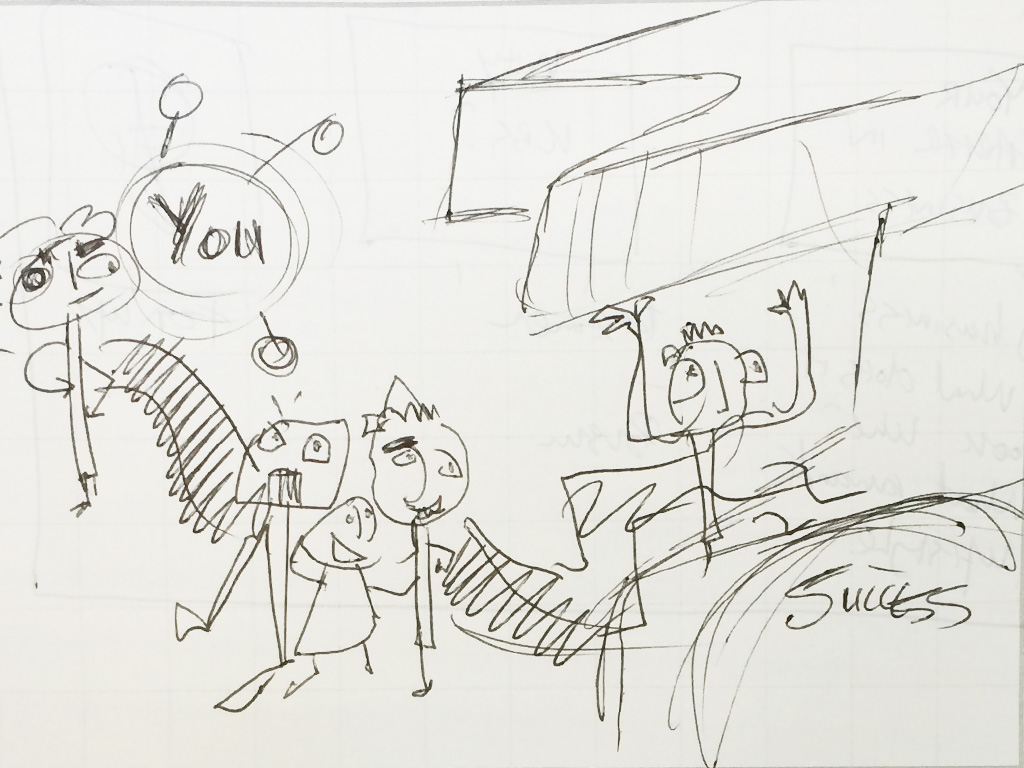As a follow-on to our discovery phase, we had design workshops with three schools.
Our previous design workshop, across central teams, was an experimental part of the alpha phase. We benefitted a lot from the participatory design and had similar experiences with the school workshops.
The workshops allowed us to explore ideas with our stakeholders while focusing on our users. The format of a design workshop helped loosen our thinking allowing more inclusive and open discussions.
By participating in design exercises, everyone felt involved regardless of design ability. The point was to get at ideas: brainstorming, discussing and not coming up with a finished product.
And it was fun!
What we did
Following an update on the discovery phase findings, with a particular focus on content strategy, we began with an open card sort and then did a sketching exercise based on a persona scenario.
Card sorting
Teams were given a pack of cards comprising of a selection of labels taken from pages across different school websites.

They were asked to group the cards in any way they thought made sense to them and to try give the groupings a label.
The purpose was to highlight the various ways in which we perceive grouping of content. A useful exercise for Information Architecture and to open discussions around user-journeys rather than rigid hierarchies of content.
Sketching
Based on our personas and user needs matrix, we provided a scenario around Helen, the prospective undergraduate, who ultimately lands on the school homepage…
Individuals were given 10 minutes to sketch as many ideas as the could to provide purposeful content to lead our persona on her journey to achieve her goals.
Many participants had never sketched before and were surprised that they were being asked to. But simple text and boxes were all they needed to come up with great ideas.
We then stuck up the design and each person provided a rationale. There were many great ideas, from off-the-wall to more conventional.
Below are some examples of the many sketches that were done…
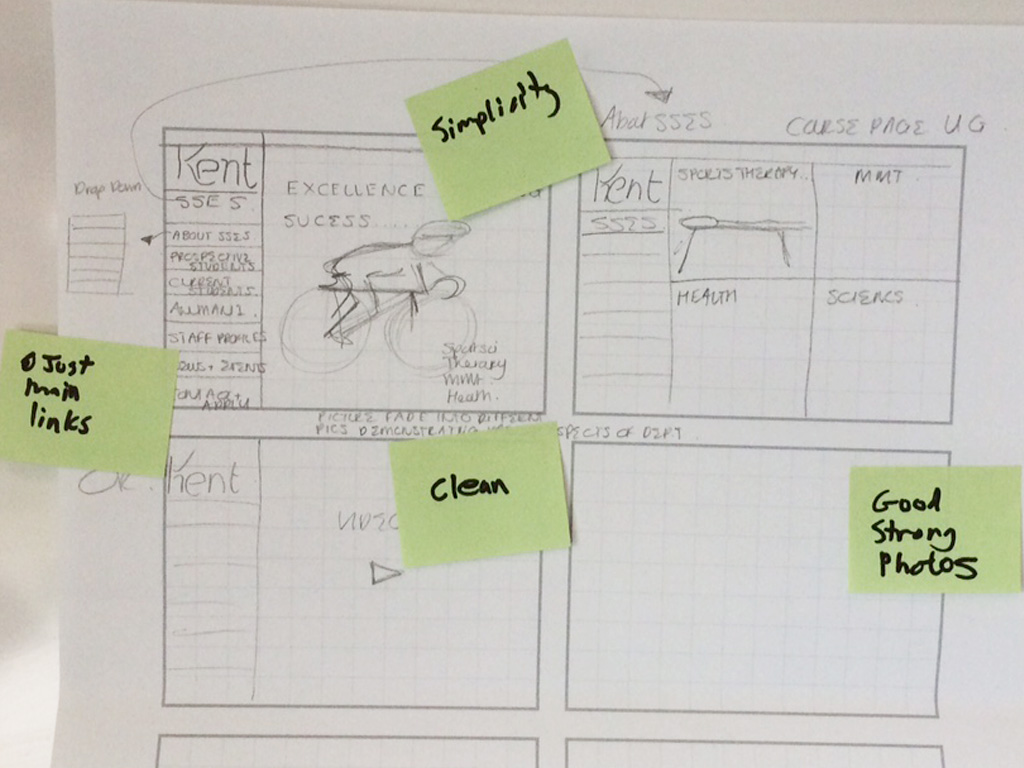
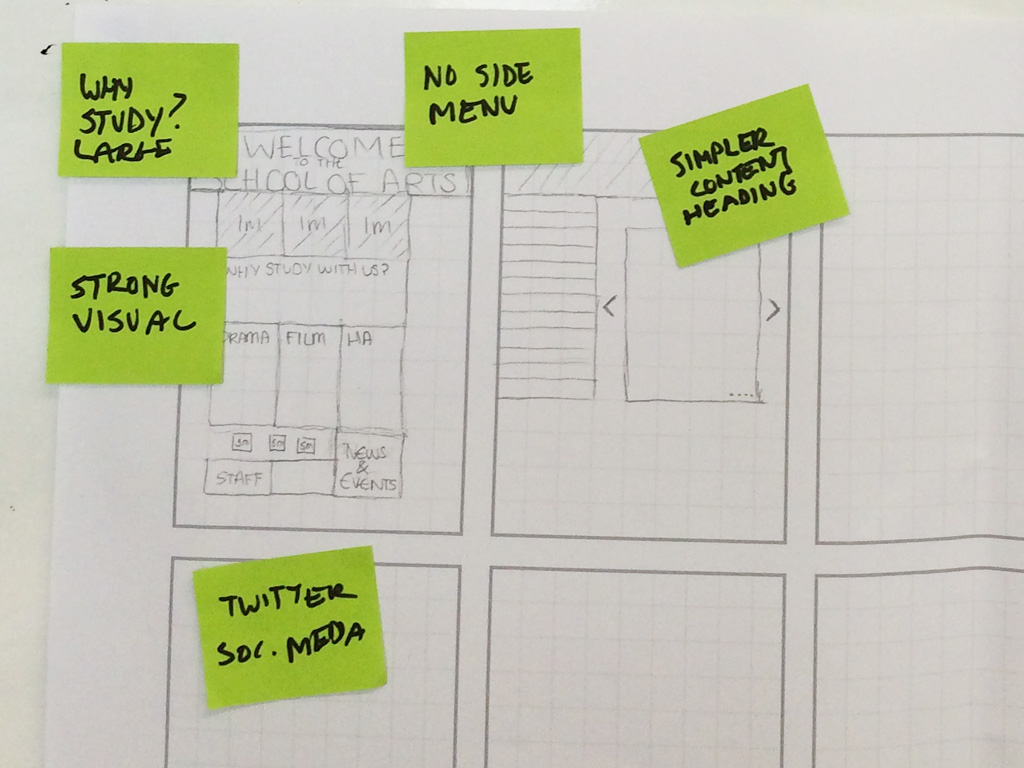
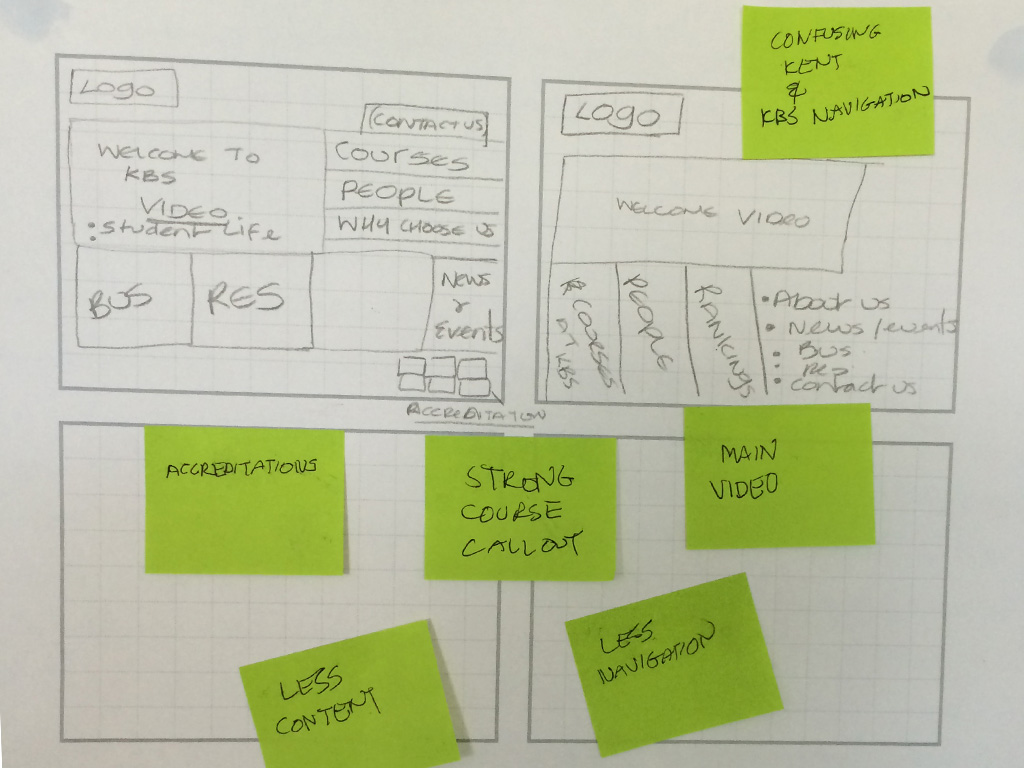
Conclusion
Some benefits from having the participatory design workshops were:
- Engagement – doing activities together created an atmosphere for open discussions and partnership. All different personalities had a chance to have their say.
- Stakeholder assurance – the feedback helped us to better align our approach with our stakeholders and give further assurance of our findings from our discovery phase.
Schools’ users have similar user journeys. That is not to say that one size fits all, there are differences, but a more standard approach for schools could help improve user journeys through better consistency.
Content tone and voice needs to be crafted for different audiences. Prospects across schools are similar, but different. Schools can use our generic personas and user needs matrix as a starting point.
Focussing on the outcome was important. What future career prospects might the investment of my money and time in your course lead to? Its more than a course, a personal development journey supported by the school family.
There was a call to keep navigation simple and reduce content – give users only what they need. Navigation should support user-journeys. We need to focus and simplify content to attract impatient users.
Strong visual design and use of video were seen as a way to create impact. This opened up discussions about sourcing good imagery and video.
There was some brand uncertainty. A strong, focused brand would help benefit schools, but would brand constraints hinder the ability for some schools to be competitive? Do different colour schemes for each school truly add any competitive advantage?
New designs would need to illustrate that schools can achieve impact and compete with other university schools while being “on brand”. It is purposeful, strategic content that matters.
